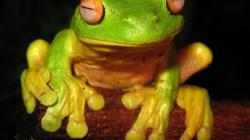Feathers, fur or leaves addresses the AC Science Understanding ACSSU044 Living things can be grouped on the basis of observable features and can be distinguished from non-living things, in the context of thinking and working like taxonomists (scientists who group and classify similar organisms).
Explore our new sequences for Year 3 aligned to AC V9
Feathers, fur or leaves provides students with hands-on opportunities to:
- inquire about living and non-living things
- learn how to think like scientists to distinguish between living and non-living things
- explore and describe observable features of plants and animals
- group animals based on observable features
Students apply their new learning by:
- planning and conducting an investigation of the animal groups present in the leaf litter in the school grounds
Linking science with literacy
In the Primary Connections approach, students are supported to create representations that draw on and strengthen their literacy development. In Feathers, fur or leaves, students represent and explain their understanding about how living things can be grouped on the basis of observable features and can be distinguished from non-living things, by creating these representations:
- Science chat-board
- Labelled diagram
- Data table
- T-chart
- Branching key
- Procedural text
- Line drawing
- Graph
- Word wall
This is a classic Primary Connections sequence aligned with the Australian Curriculum V8.4. It is only available as a downloadable package.
The Feathers, fur or leaves sequence package includes all the resources you need to teach this sequence, including:
- The Feathers, fur or leaves unit PDF
- Equipment list
- Australian Curriculum v8.4 alignment
- Student eResource sheets
- Specimen photos for use in activities
- Assessment resources:
- Assessment rubrics
- Work samples
- Student self-assessment
- Achievement standard class checklist
Teacher tools
Our new all-online sequence Finding features shares a curriculum content descriptor with this sequence. Finding features is aligned to the Australian Curriculum V9 and contains embedded professional learning and supplementary teacher advice.
Finding features
Students use their senses to explore the external features of plants and animals, and learn how to group plants and animals with similar characteristics. They apply this knowledge to design and make a digital or physical scientific model of a plant or animal.

